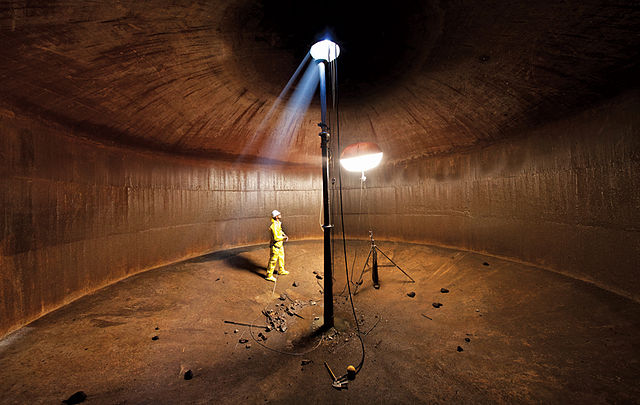A cistern is a space excavated in bedrock or soil designed for catching and storing water. To prevent leakage, the interior of the cistern was often lined with hydraulic plaster.
Portuguese cistern (Mazagan), El Jadida, Morocco (1514)
The difference between a cistern and a well is in the source of the water: a cistern collects rainwater where a well draws from groundwater.
Ancient Buddhist rock-hewn cistern at Pavurallakonda in India
One of the Cisterns of La Malga, Carthage, 1930
Rainwater harvesting (RWH) is the collection and storage of rain, rather than allowing it to run off. Rainwater is collected from a roof like surface and redirected to a tank, cistern, deep pit, aquifer, or a reservoir with percolation, so that it seeps down and restores the ground water. Dew and fog can also be collected with nets or other tools. Rainwater harvesting differs from stormwater harvesting as the runoff is typically collected from roofs and other area surfaces for storage and subsequent reuse. Its uses include watering gardens, livestock, irrigation, domestic use with proper treatment, and domestic heating. The harvested water can also be committed to longer-term storage or groundwater recharge.
Basic configuration of domestic rainwater harvesting system in Uganda.
Rainwater capture and storage system, Mexico City campus, Monterrey Institute of Technology and Higher Education
Cistern, Mission District, San Francisco, California
Rainwater capture, Gibraltar East Side, 1992








